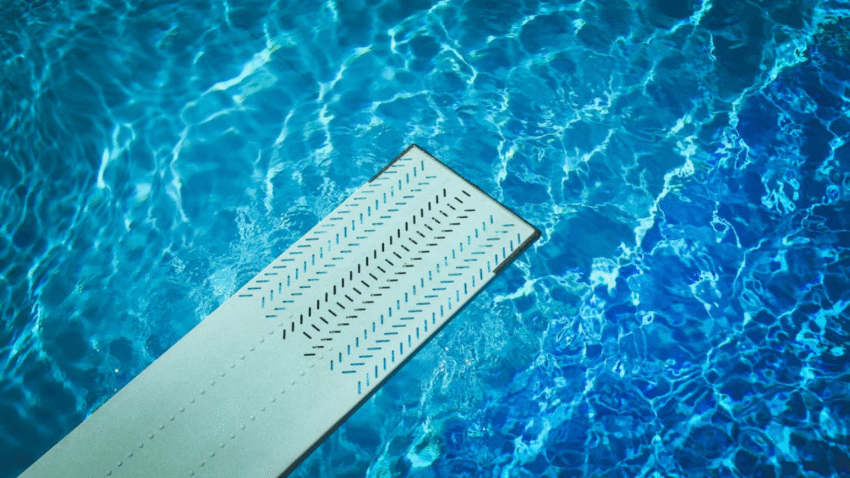Introduction
Cracked or loose coping stones around your pool aren’t just unsightly—they can become safety hazards and lead to more serious structural issues. In this step-by-step guide, you’ll learn how to repair pool coping stones the right way, whether you’re dealing with chips, movement, or complete detachment. With the right tools and techniques, you can restore your pool’s edge to like-new condition and extend its lifespan.
Why Repairing Pool Coping Stones Matters
Coping stones are the protective border between your pool structure and deck. They’re essential for:
- Directing water away from the pool shell
- Providing a smooth, safe edge for swimmers
- Adding visual appeal to your pool area
When these stones become damaged or loose, they can cause:
- Trip hazards or sharp edges
- Water leaks into the pool shell
- Erosion of mortar or expansion joints
- Long-term damage to the pool’s structure
Timely repairs maintain safety, prevent water intrusion, and keep your pool looking polished and professional.
Step-by-Step Guide to Repairing Pool Coping Stones
Step 1: Inspect the Damage
Start by examining your pool’s coping stones to identify the type and extent of damage. Look for:
- Cracks or chips
- Loose or rocking stones
- Missing mortar or grout
- Gaps between stones and the pool deck
Take note of how many stones are affected and whether they need minor repairs or full replacement.
Tip: Tap stones lightly with a rubber mallet—hollow sounds often indicate looseness.
Step 2: Gather Tools and Materials
You’ll need the following for most coping stone repairs:
- Hammer and chisel or masonry saw
- Rubber mallet
- Flathead screwdriver or pry bar
- Pool coping adhesive or thinset mortar
- Joint grout or mortar mix
- Trowel and pointing tool
- Pool-safe silicone caulk
- Safety goggles and gloves
- Sponge and water bucket
Optional: replacement coping stones if any are broken beyond repair
Step 3: Remove the Damaged Stones
For loose or broken stones:
- Use a screwdriver, flat bar, or chisel to carefully pry up the coping stone.
- Work around the edges to avoid damaging neighboring stones.
- If mortar is stubborn, tap gently with a hammer and chisel to break the bond.
- Once removed, clean off all old mortar from the stone and bonding surface.
Caution: Take care not to damage the pool beam or tile beneath the stone.
Step 4: Clean the Surface Area
Before reinstallation:
- Brush away all loose debris, old mortar, and dust.
- Wipe the stone and beam clean with a damp cloth or sponge.
- Allow both surfaces to dry fully.
A clean surface ensures strong adhesion and a long-lasting repair.
Step 5: Reapply Mortar or Adhesive
Depending on the material and size of the coping stone, use one of the following:
- Thinset mortar or Type S mortar for most concrete or stone coping
- Pool coping adhesive for precast or smaller repairs
- Flexible mortar if the pool is exposed to frequent temperature swings
To apply:
- Use a trowel to spread a 1/2″ thick layer of mortar evenly on the beam surface.
- Lightly butter the underside of the stone with a small amount of mortar.
- Press the coping stone firmly into place.
- Tap gently with a rubber mallet to level it with adjacent stones.
Tip: Use a level to make sure the stone is flush and properly sloped (away from the pool).
Step 6: Re-Grout or Re-Mortar the Joints
After setting the coping stone:
- Allow the mortar to cure (follow manufacturer’s recommendations—typically 24–48 hours).
- Mix new grout or mortar to fill in the gaps between stones.
- Use a pointing tool or finger to pack the joints evenly.
- Smooth and shape for a consistent look.
- Wipe away excess grout with a damp sponge before it hardens.
Optional: If the expansion joint between the coping and deck is damaged, clean it out and refill it with pool-grade silicone caulk.
Step 7: Let the Repair Cure Fully
Once everything is set and grouted:
- Let the mortar cure for at least 48 hours before using the pool.
- Avoid walking on the coping stones during this period.
- Keep the area shaded and dry if possible.
⚠️ Important: Always follow specific drying times based on the product used and weather conditions.
Common Mistakes to Avoid
- Using the Wrong Mortar or Adhesive
- Can lead to bonding failure or cracking.
- Solution: Use pool-rated mortar or coping adhesive only.
- Failing to Clean the Surface
- Old debris weakens the bond between stone and beam.
- Solution: Thoroughly clean both surfaces before installation.
- Rushing the Cure Time
- Stepping on uncured stones can ruin alignment.
- Solution: Allow full curing time before using the area.
- Skipping Expansion Joint Repair
- Water can seep in and cause freeze-thaw damage.
- Solution: Always inspect and reseal expansion joints if needed.
- Not Matching Replacement Stones
- Mismatched stones ruin aesthetics and can affect alignment.
- Solution: Source identical or very similar stones when replacements are needed.
Extra Tips & Pool Hacks
- Seal natural stone coping with a breathable, pool-safe sealant to prevent future staining or cracking.
- Use a masonry blade for cleaner cuts when resizing stones.
- Regularly inspect coping in spring and fall to catch issues early.
🔧 Need help with more pool fixes? Check out our article on how to fix a leaking pool pump for another essential repair guide.
Conclusion
Knowing how to repair pool coping stones is an essential skill for any pool owner. Whether you’re fixing a single loose piece or refreshing an entire section, proper removal, cleaning, bonding, and sealing will keep your pool safe and looking great. Tackle small issues early, and you’ll save yourself time, money, and major repairs down the road.
💡 Final Tip: Keep a small kit with spare mortar, tools, and caulk on hand so you’re always ready for quick coping touch-ups.
